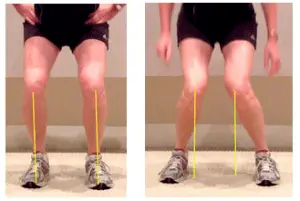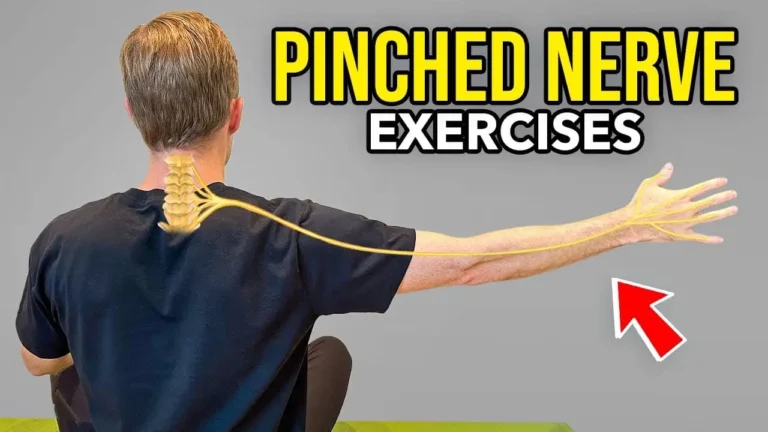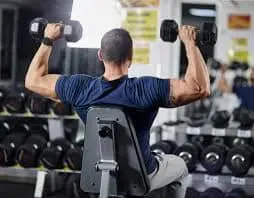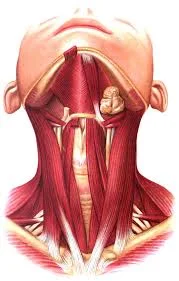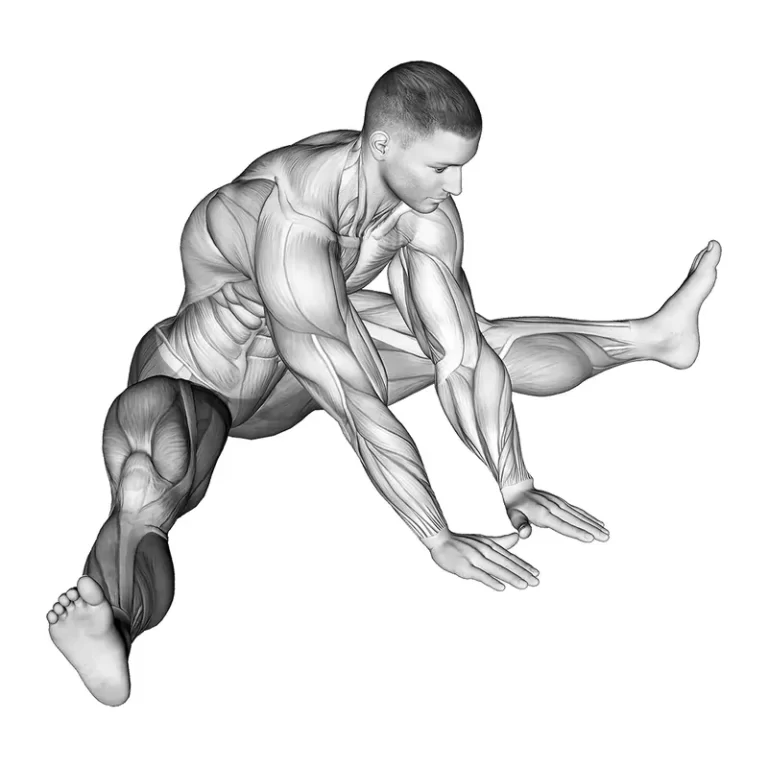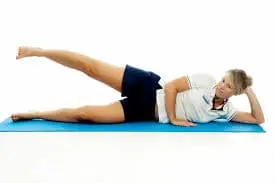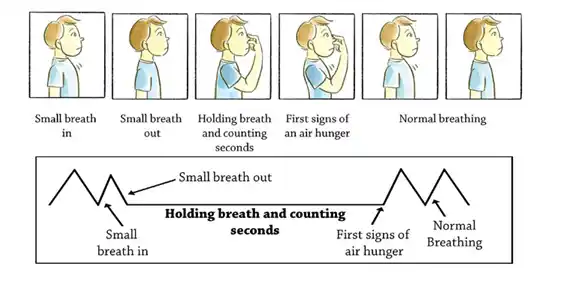11 Best Exercise for Knee Varus Deformity
Introduction:
Exercises for knee varus deformity are designed to strengthen the muscles surrounding the knee, improve alignment, and enhance stability. Proper exercise routines can alleviate pain, reduce stress on the joints, and improve overall mobility, preventing further complications.
An orthopedic condition known as knee varus deformity is defined by the inward point of the thigh in the lower leg. This knee misalignment can have many negative effects, including joint pain, instability, and an increased risk of osteoarthritis. To treat knee varus deformity, exercise has been identified as a crucial non-surgical strategy.
Exercises that strengthen the hip’s external rotators can help with knee varus. By improving hip flexibility, this exercise can lessen lower back pain caused by improper leg positioning. Exercises for mobility and flexibility might help lessen the pain given on by this illness. Exercises for strengthening and extending the muscles can help prevent varus deformity after corrective surgery.
Knee Varus Alignment Characteristics:
Varus alignment results in an inward shift of the foot’s bearing axis, which increases force and stress on the medial, or inner, part of the knee. The knees bend outward as a result of this. As a result, those who suffer from this ailment are known as club feet. You are more likely to get osteoarthritis in your knees if you are stooped over. The development of knee varus is more likely in those who are obese or overweight. On the other hand, weight loss can lower your risk of osteoarthritis in the knee.
The degree of varus alignment is another factor, besides weight, that raises the risk of osteoarthritis in the knee. An increased risk of developing osteoarthritis in the knee is associated with a higher score (or worse abnormality). If you have varus alignment, your chances of developing osteoarthritis in your knees are higher. The affected meniscus is the medial in varus abnormalities.
Knee varus deformity causes:
Newborns often have varus knees. Many of their bones are still immature, and their knee joints are still forming. Some newborns may develop varus knees as a result of rickets, a medical condition marked by low or missing vitamin D levels and bones that are weak.
Among the other potential reasons for varus knee are:
- Rickets
- Abnormal growth of bones
- Bone infections
- Leg length discrepancy
- Bone tumors
Signs and symptoms:
Therefore, there are other symptoms such;
- Inability to run or walk comfortably
- Patients experiencing knee instability may feel as though their knee is twisting and about to “give out.”
- Reduce range of motion
- Knee pain
- Swelling in the area surrounding the knee.
- Hip and knee pain
Exercise’s Advantages for Knee Varus Deformity:
Getting more exercise is essential to improving general health. Exercise shouldn’t be limited by bowed legs. Many people without pain or issues can work and exercise despite having front feet. By taking good care of your knees and engaging in correct exercise, you can even avoid issues. As an example, maintaining the health of your knees can be achieved by strengthening and stretching your legs and hips.
To avoid joint issues, exercise can help you control your weight. Osteoarthritis of the knee is further aggravated by obesity.
Exercise for Knee Varus Deformity:
Varus knee has been found to respond well to exercises that strengthen the hip’s external rotator muscles.
Always get medical advice before starting an exercise program to find out which exercises work best for your particular situation. Exercises or methods used incorrectly may make your condition worse.
Clamshell
- You lie on your side to begin.
- Recline to your left side, bending at the elbows.
- The support should then be held up to your head with your left hand.
- Place your right foot and leg over your left, bending your knees to a 45-degree angle.
- Put your right hand lightly on the ground in front of you or on your hip to help with balance.
- After that, cautiously raise your right knee toward the sky while keeping your feet close to your body.
- Hold this position for a few seconds.
- While maintaining a tight core, shift your lower right leg toward your left.
- Then return to your neutral position.
- Then relax.
- Repeat this exercise five to ten times.
- On the other side, repeat the exercise.
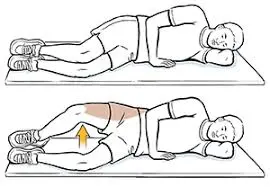
Standing side Leg Raise
Because you can perform a standing leg raise in almost any place, including while waiting, it’s a very adjustable exercise.
You may want to utilize a chair or some other form of support for improved stability.
- Put your hands first, either in front of you or on your hips.
- With your toes pointing front, stand straight.
- Breathe in and transfer your weight to your left foot as you raise your right leg off the ground with the foot contracted.
- Hold this position for a few seconds.
- Bring the leg back down to meet the left as you release the breath.
- Then return to your neutral position.
- Then relax.
- Repeat this exercise five to ten times.
- Repeat the exercise on the opposite side.
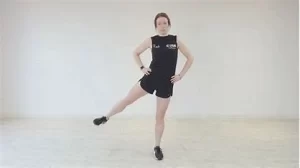
Squat
- Keeping your legs wide apart, plant your feet firmly on the ground.
- Don’t raise your weight from your toes or heels; instead, keep it centered.
- Keep your body upright as you slowly bend your knees.
- Refrain from bending forward.
- Always keep your hips beneath the support.
- Your hip and knee joints have almost similar angles at the bottom of the movement.
- Keep your muscles taut, regulated, and at a constant pace.
- Take a breath as you squat down.
- Hold this position for a few seconds.
- Then return to your neutral position.
- Then relax.
- Repeat this exercise five to ten times.
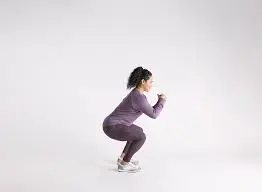
Sitting hamstring stretch
- One leg should be extended while you sit upright with your back to the front.
- The bottom of your foot should press against your mid-thigh as you bend the other leg.
- Stretch out to touch your ankle.
- Maintain a straight back, neck, and knee.
- Your thigh’s back should feel stretched.
- Hold this position for a few seconds.
- Then return to your neutral position.
- Then relax.
- Repeat this exercise five to ten times.
- Repeat the exercise on the opposite side.
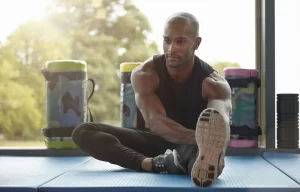
Internal Hip Rotation
Leg alignment is improved and hip flexibility is increased with this exercise. There are stretches and exercises for internal hip rotation that may stress your knees. If you have any knee pain, you should stop.
- Begin by standing on the ground with your knees bent 90 degrees.
- Arrange your feet so that their soles are comfortably separated on the ground.
- Your right leg should be bent such that your right toe points upward.
- When you rotate your hips internally, this helps protect your knee.
- Keeping your right knee securely planted, rotate your right inner thigh toward the ground.
- Your right thigh and right calf should form a right angle when you lower your thigh.
- Your hips’ front and outer regions ought to feel stretched.
- Hold this position for a few seconds.
- Return to the beginning position with your right leg raised.
- Then return to your neutral position.
- Then relax.
- Repeat this exercise five to ten times.
- Repeat the exercise on the opposite side.
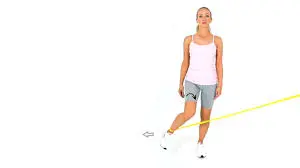
Standing calf muscle stretch
- Begin by placing your hands against a wall for support, then split your legs into a half-split posture.
- To stretch the muscles in your posterior leg, keep the heel flat on the floor and bend your hips forward.
- Hold this position for a few seconds.
- Then return to your neutral position.
- Then relax.
- Repeat this exercise five to ten times.
- Repeat the exercise on the opposite side.
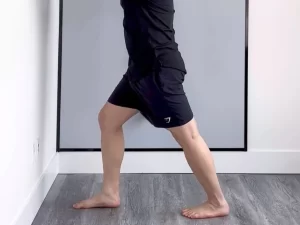
Lungus
- Place your feet hip-width apart as you begin in a standing stance.
- Take a step forward that is longer than a walking stride, placing one leg in front of you and the other behind your body.
- Your foot ought to touch the ground flat and stay that way through.
- Your back heel will lift off the surface.
- Lower yourself until your knees are 90 degrees bent.
- Do not forget to maintain an upright trunk and an engaged core.
- Hold this position for a few seconds.
- Then return to your neutral position.
- Then relax.
- Repeat this exercise five to ten times.
- After that, firmly push off with your front leg to get back into the starting position.
- Repeat the exercise on the opposite side.
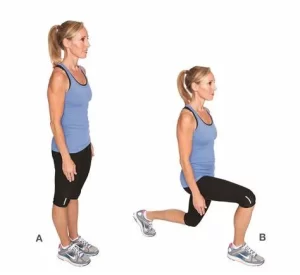
External hip rotation
When the knee and thigh turn outward away from the body, the hip external rotation takes place. Place the foot that is closest to the immovable object inside the band that is firmly fastened to it. Move away from the object with a few cautious steps.
- To begin, raise the working leg off the ground while maintaining the balance of your off leg.
- Use your arms to support yourself against a firm object.
- Your lower and upper legs will make an angle of around 90 degrees if you raise your higher leg slightly and bend your knee.
- Now start the repetition by turning your upper leg toward the floor and away from your body.
- Hold this position for a few seconds.
- Then return to your neutral position.
- Then relax.
- Repeat this exercise five to ten times.
- Repeat the exercise on the opposite leg.
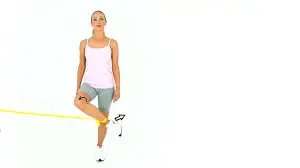
Single leg bridging
- With your knees bent, feet flat on the floor, and hands by your sides, lie on your back.
- Elevate one foot and fully extend the leg, making it approximately 45 degrees from the floor.
- This is the initial position.
- When your shoulders and knees are in a straight line, raise your hips while contracting your abs and buttocks to help with the lift.
- Gently contract your abdominal muscles, creating a pull toward your spine from your belly button.
- Hold this position for a few seconds.
- Then return to your neutral position.
- Then relax.
- Repeat this exercise five to ten times.
- Repeat the exercise on the opposite leg.
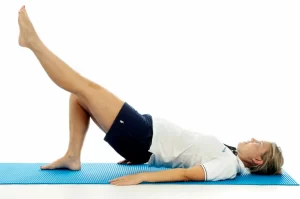
Butterfly Stretch
- With your feet pressed together, take a seat on the ground or something to support yourself.
- To make the sensation more intense, bring your feet closer to your hips.
- Press into your sitting bones and legs.
- Tuck your chin in toward your chest while lengthening and straightening your spine.
- With each exhale, lean a little bit deeper into the stretch or drop heavily to the ground.
- Hold this position for a few seconds.
- Then return to your neutral position.
- Then relax.
- Repeat this exercise five to ten times.
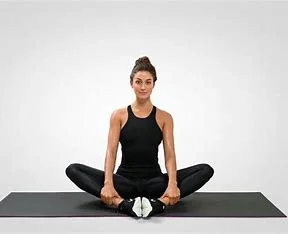
Piriformis muscle stretch
- Place yourself on the chair in order to begin.
- Raise your right ankle and rest it on top of your left knee.
- After that, sit up straight and tall and flex your right foot by bringing the toes toward your shin.
- Bend your chest forward toward your legs while maintaining a straight spine.
- Bend forward just enough to feel stretched but not so much that it hurts.
- Hold this position for a few seconds.
- Then return to your neutral position.
- Then relax.
- Repeat this exercise five to ten times.
- Repeat the exercise on the opposite leg.
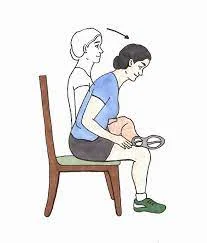
What safety precautions must be taken while exercising?
- Before, during, and after the workout, warm up and stretch.
- As instructed, stretch, hold, and complete the exercise.
- When exercising, try to avoid making any sudden or jerky movements.
- Stay away from tough activities.
- Stretches before and between sets, as well as the proper sequence for completing the recommended number of repetitions for each exercise, are all outlined in the protocol.
- Between each set of exercises, take a rest.
- Wearing loose, comfortable clothing during a workout maximizes the range of motion and promotes relaxation. Don’t wear clothing that is too tight or trendy.
- You must work with good posture.
- Holding your breath while exercising is never recommended. Breathe deeply and slowly when you exhale during the activity. Deep inhalation tightens your muscles and increases blood pressure.
- Remain hydrated.
When do you not exercise?
- You feel unwell.
- If any pain or numbness is felt
- Severe muscle burn
- Fever
- Headache
- If exercising hurts, don’t continue.
Braces and Orthotics:
Your doctor may recommend braces, shoe inserts, or knee braces as part of a personalized workout program. Orthopedics may be a good choice for you if you run or engage in other physically demanding sports and have a forefoot. The purpose of this interior shoe portion is to adjust your gait.
When a youngster with bow legs needs surgery, corrective braces are more frequently used. They include a modified knee-ankle-foot device that is used day and night. It is rare to use flexible boards for adult foot restoration. For adults, taking advice from a physician or physical therapist is recommended. They can provide advice on whether wearing braces would improve or worsen your issue.
Summary:
A condition that alters a person’s leg’s bone alignment is called varus knee, or genu varum. This ailment is characterized by a misalignment of the bigger tibia (calf bone) and femur (thigh bone) bones.
You can work out even if you have a varus deformity in your knees. Your priorities should be keeping up a healthy lifestyle and engaging in enjoyable exercise. Make sure you spend some time strengthening your legs and hips, increasing your balance, and stretching your lower limbs to maintain the health of your knees. You might decide to utilize orthotics if your feet are planted firmly on the ground.
At last, if activity-induced knee pain is a concern, non-impact training may be an option. To begin a suitable exercise routine, speak with your doctor. You can also wear a suitable or comfortable orthosis for proper knee and ankle alignment if you have a varus deformity in your knee.
The pain associated with the condition can be lessened with a variety of exercises. It may be possible to avoid the need for surgery to treat the condition by performing strengthening and stretching activities.
FAQ:
How is a varus deformity corrected?
The talus is usually translated and bent away from the lateral malleolus in a varus deformity, resulting in lateral gaping. Compression with a partially threaded screw must be applied on the lateral side to cure this deformity.
Which workout is ideal for genu varum?
Exercises including swimming, cycling, rowing, yoga, pilates, and tai chi are advised. Running, soccer, aerobics, basketball, tennis, and volleyball are not advised forms of exercise. If your legs are bent forward, you can still maintain a healthy lifestyle and gradually get better at your gait with gentle workouts.
How can knee varus be avoided?
The varus knee has been shown to benefit from exercises that strengthen the external rotator muscles in the hip. By improving hip flexibility, the following exercise helps lessen lower back pain caused on by bad leg posture.
Is varus knee harmful?
Your chance of developing osteoarthritis in your knees is increased not just by your weight but also by the degree of your varas alignment. Your chance of getting osteoarthritis in your knees rises with a greater or more severe degree of misalignment. You run a higher risk of getting worsening osteoarthritis in your knees if you have a varus alignment.
How are varus knees balanced?
During primary total knee arthroplasty, femoral component rotation, osteophyte excision, soft-tissue release, and bone resection are techniques utilized to balance the varus knee.
Varus knee: is it normal?
No, varus alignment is one set component that contributes to osteoarthritis in the knee. Ligament imbalance, tibial deformity, or tibial-femoral combined deformity could be the cause. Malalignment needs to be understood to restore the frontal plane neutral mechanical axis after total knee arthroplasty.
Why does genu varus occur?
The most common cause of genu varum is rheumatoid arthritis and associated disorders that obstruct normal bone formation. If bone problems, infections, or tumors prevent one leg from developing normally, the limb may end up bow-shaped.
How do valgus and varus deformities differ from one another?
Someone with a valgus deformity of the knee, for example, will seem knock-kneed because the distal part of the leg below the knee will slant outward with regard to the femur. Despite this, an individual with a varus deformity at the knee appears to be bowlegged, with the distal leg bending inward toward the femur.
References:
- D. Prajapati (2023, Aug. 26). Samarpan Physio recommends Eleven effective exercises for knee varus deformity. Physiotherapy Clinic in Samarpan. @google_vignette https://samarpanphysioclinic.com/11-best-exercise-for-knee-varus-deformity
- Contributing Editor for WebMD. (2023b, September 15). Top Varus Knee Exercises. Web Medical. Best Varus Knee Exercises: https://www.webmd.com/a-to-z-guides
- Image 5, Get My Patient Well Again. 2022a, 25 January. Hip Internal Rotation Band Exercise on a Standing Mat [Video]. YouTube. /watch?v=MoYxDnoqPJE
- Image 8, Get My Patient Well Again. 2022a, 25 January. Exercise with the Hip External Rotation Band While Standing [Video]. You Tube. YouTube: https://www.youtube.com/watch?v=1hh80dQpqYY

